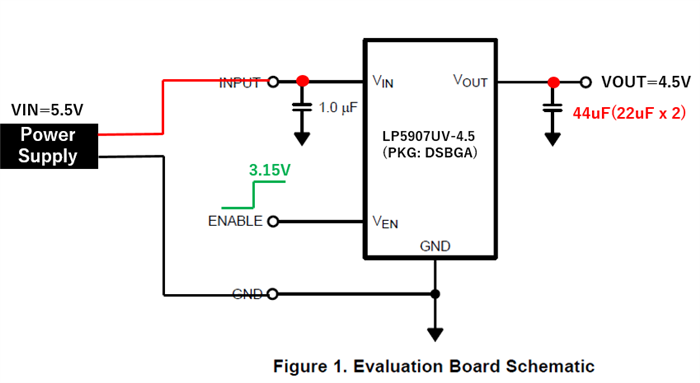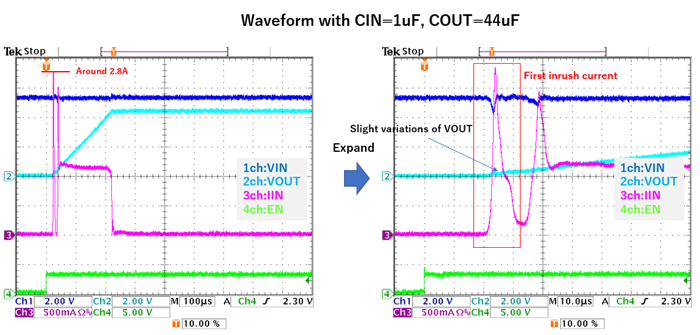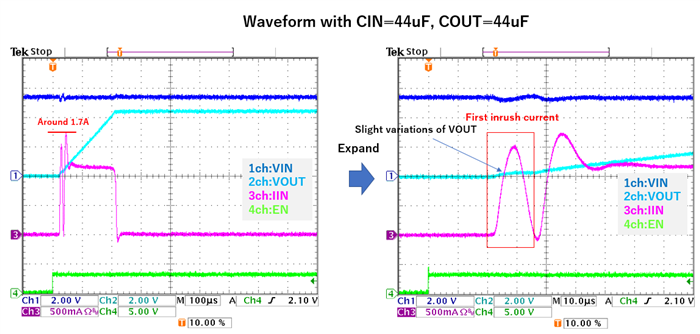Hi Team,
We are evaluating LP5907UVX-4.5/NOPB on EVM.
We understand that the inrush current is one time only but the inrush current occurs two time when start up on EVM.
So, we would like to know the cause.
We guess that the first inrush current is caused by slight variations of VOUT.
Is this a characteristic of LP5907?
[Conditions]
[Result]
If CIN is increased from 1uF to 44uF, the peak of first inrush current is decreased.
Regards,
Kanemaru




